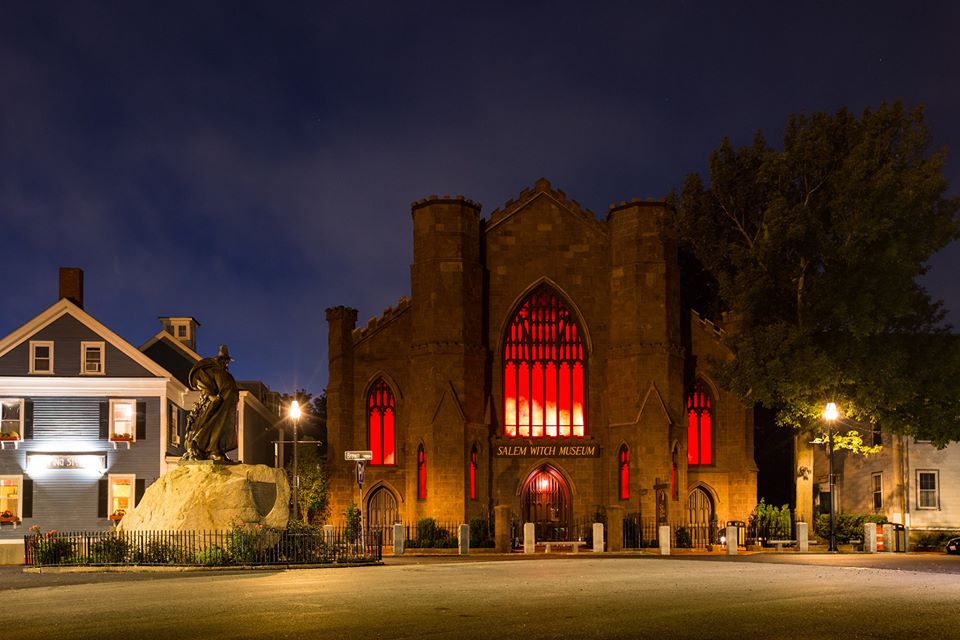A Visit With Rachel Christ
This month, I’m pleased to introduce you to Rachel Christ, the Director of Education at the Salem Witch Museum.
NG: Hi Rachel. Thanks for joining us today. We’d love to hear a bit about yourself and how you came to join the staff of the Salem Witch Museum.
RC: I have been Director of Education here at the Salem Witch Museum since 2016 and was promoted to my current position in 2018. I began working at the Salem Witch Museum while an undergraduate student and had originally planned for this to be a summer job. However, I ended up falling in love with this museum and this history. As happens for so many of us who study the history of witchcraft, it’s become an obsession. My research continues, both in my graduate work and at the Salem Witch Museum. This is such a fascinating and important subject, it is hard to stop researching once you have started!
NG: I understand the museum is undergoing a massive renovation. Tells us about it.
RC: Our museum opened in 1972 and is the oldest museum in Salem to teach the story of the Salem witch trials. In the 1990s we added a second exhibit, focused on the history of the image of the witch and the broader history of witch-hunting. Both exhibits are currently undergoing significant updates.
Over the past fifty years, we have learned so many new things about both the Salem and European witch trials. These renovations are focused on bringing the entire museum up to date with current scholarship, along with physical renovations.
We were very lucky to have completed the first major renovation in March of last year. It involved a massive interpretive update to our “Witches Through History” exhibition. It finished on schedule as the entire country shut down only a few days later because of the pandemic. We are particularly proud to have added an original fifteenth-century copy of Malleus Maleficorum (in English, Hammer of Witches) to this exhibit. This influential book was an early instruction to witch hunters and led to thousands of deaths.
Our original plan was to complete the rest of the renovations by May 2022, which is the 50th anniversary of our museum’s opening day. However, COVID-19 has set those plans back, as it has done for so many museums and organizations. We will move to complete these final renovations as soon as possible.
NG: Authors Nathaniel Hawthorne, Ray Bradbury, and Brunonia Barry have ancestors who played a part in the 1692 Salem Witch Trials. Have you heard stories of other famous or infamous descendants of accused witches or witch accusers?
RC: It is unbelievable when you look into the complex and enormous web of descendants of the Salem witch trials. We meet descendants at our museum every week and have had the fortunate experience of meeting some famous descendants over the years. For example, the fashion designer Alexander McQueen is a descendant of Elizabeth Howe, one of the women who was executed during the trials. He actually came to our museum years ago while reaching a fashion show inspired by his ancestor.
NG: I enjoyed visiting the museum’s website. It offers a virtual tour and notice of upcoming events. I recently attended a wonderful Zoom online presentation called Race and the Salem Witch Trials. Over a hundred people, from all over the world attended. Can you give us a sneak preview of events to look for in the coming months?
RC: We have some really exciting virtual events coming this year. In April we are hosting a virtual lecture with historian Marilynne Roach. She will discuss her theories regarding where the executed were buried in 1692—a fact we actually do not know with certainty. We will also host a virtual lecture for Salem’s Ancestry Days with the curator of the Peabody Historical Society, Kelly Daniell. This lecture will be focused on the life and death of John Proctor—a fascinating historical figure from the Salem witch trials and the relative of a huge number of living descendants! We have a few other events in the works—nothing has been finalized yet, but we hope to host virtual events over the summer and in October!
NG: The museum bookstore features a wide-ranging selection of nonfiction and fiction titles related to the museum’s mission. Do you have a favorite nonfiction book to recommend? A work of fiction?
RC: There are so many incredible books written on the Salem witch trials. Marilynne Roach’s book The Salem Witch Trials: A Day-by-Day Chronicle of a Community Under Siege is certainly one of my favorites. It is a really remarkable book; as the name suggests, it is literally a day-by-day account of what took place throughout the year 1692. It is almost a textbook on this period and is literally a researcher’s dream! Kathleen Kent’s book Heretic’s Daughter is also an incredible book. Kent is a descendant of Martha Carrier, and this book is told through the perspective of one of Martha Carrier’s daughters during the witch trials. It is a really well-written book that provides a unique window into the world of 1692.
NG: The Salem Witch Museum takes a broad look at witchcraft from the early days of witch-hunting to the modern acceptance of Wiccan and witches as a viable religion. What do you think caused this massive cultural change?
RC: The concept of a witch is absolutely fascinating. As a base definition, a witch is a person who can control the supernatural. At various times, this idea has changed and evolved. The concept of a witch is very old and can be found in most cultures around the world. In 2018 Madeline Miller wrote an incredible fiction book about the Greek goddess Circe, a figure who was considered the Greek goddess of witchcraft. In the early modern period, the witch became a symbol of evil and the demonic in Europe, a shift that resulted in the deaths of thousands. However, as time has gone on, the witch has once again been transformed in our cultural memory. With distance from legal witch trials, the witch was absorbed into folklore and fairy tales. By 1900, L. Frank Baum’s book The Wonderful Wizard of Oz introduced America to its first major good witch. Throughout the 20th century, the good witch became an increasingly prevalent figure in pop-culture. Around this same time, the historic legacy of the witch became the inspiration for some Neopagan religions in the mid-twentieth century. Today, the witch means so many things—you could argue this figure means something different to everyone.
NG: Is there anything you wish I’d asked but haven’t?
RC: Thank you for this opportunity to discuss our museum! For the past year, we’ve been working to produce virtual resources to make our museum as accessible as possible. I encourage anyone who is interested in this subject to check out our website—A virtual exhibit, online site tour, and series of videos about the year 1692 can be accessed for free!




I was fortunate enough to visit the museum the summer before everything closed. It’s an amazing resource as well as an entertaining place to visit. I’ll pass along the book suggestions to out-of-state fans. Thank you for the fascinating interview, Nancy!
Interesting, Alyson! Sounds like you had fun. Can’t wait to visit myself!